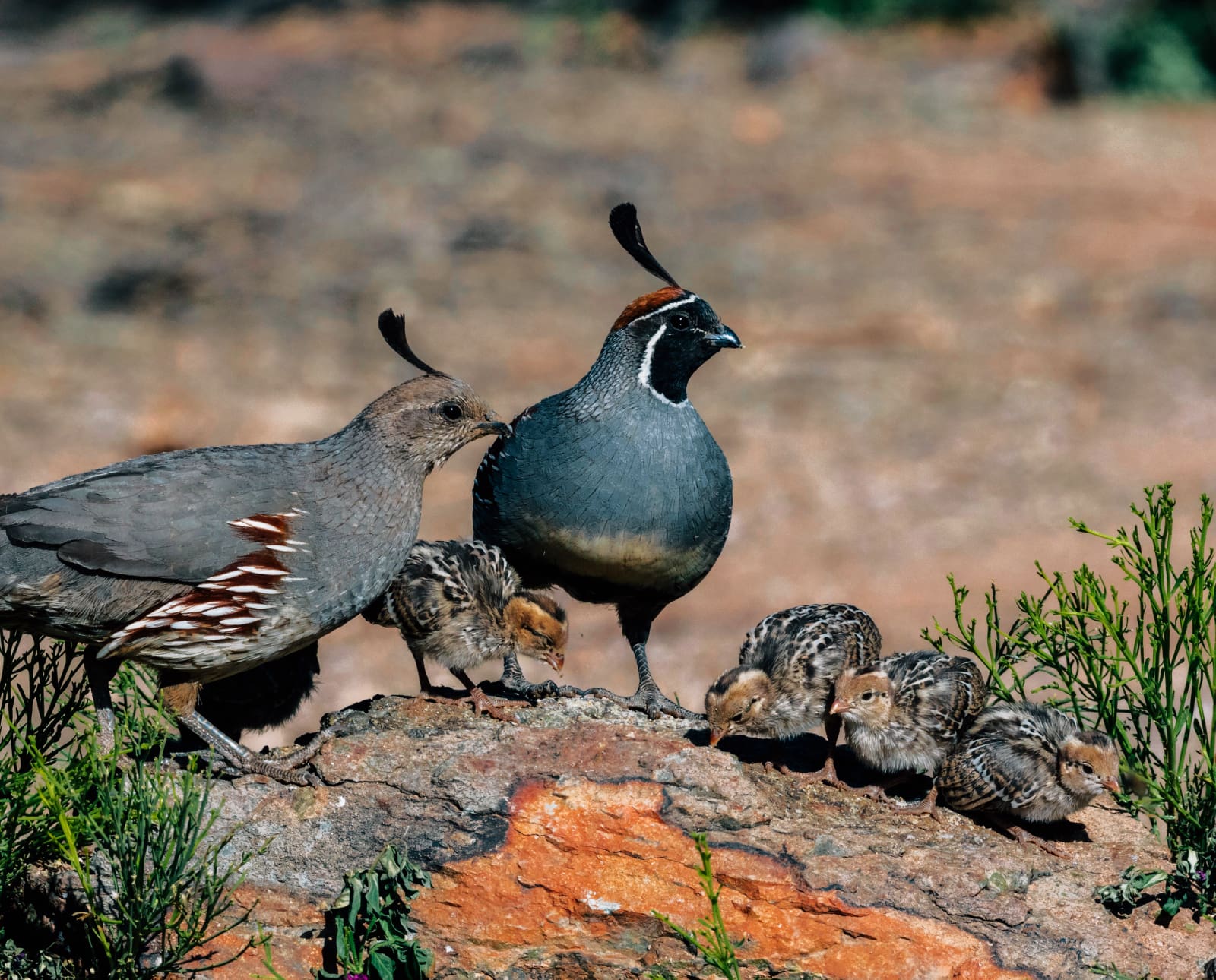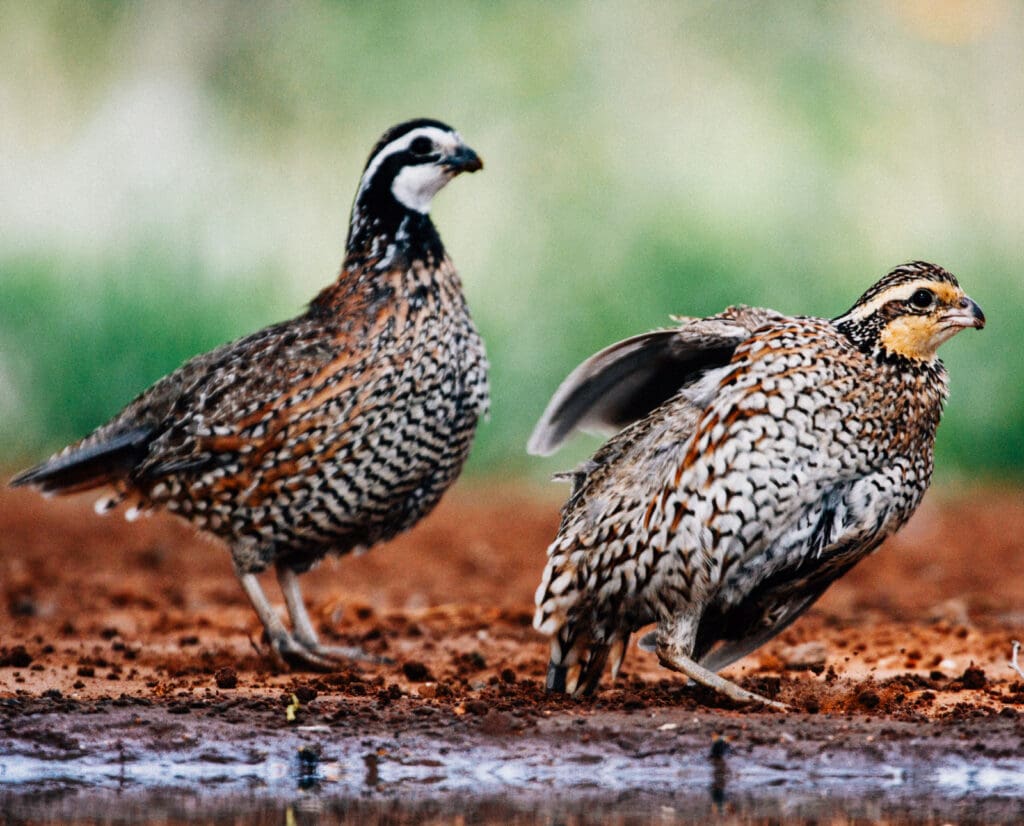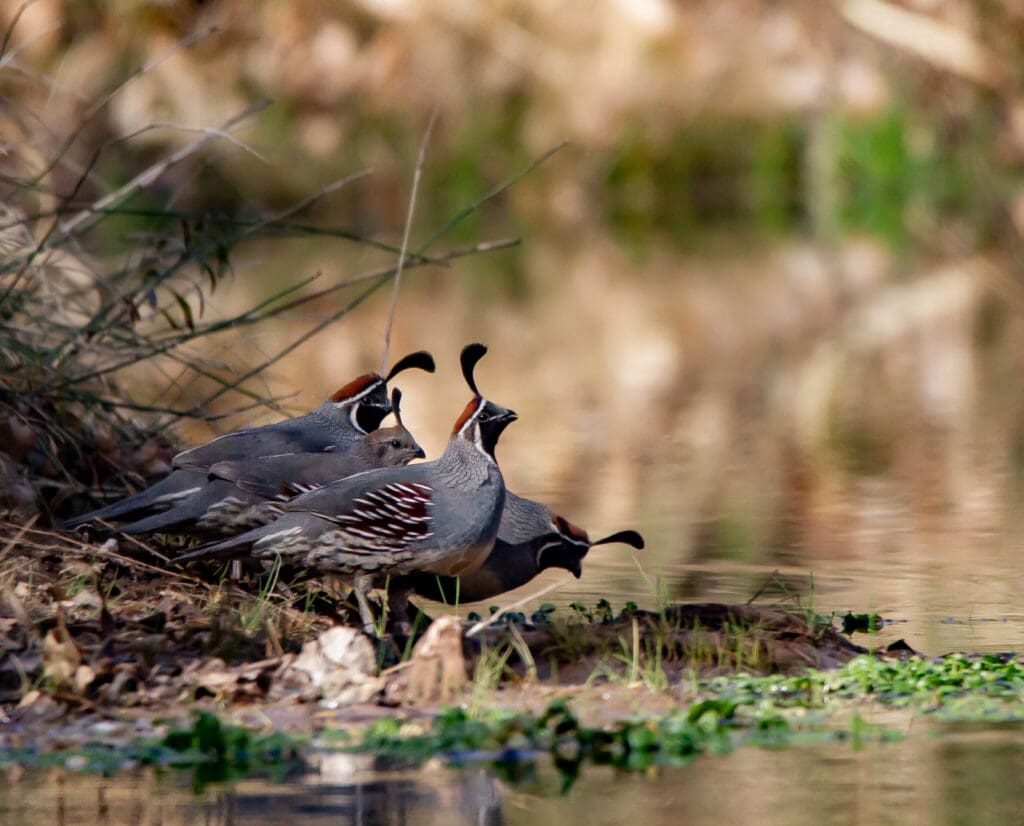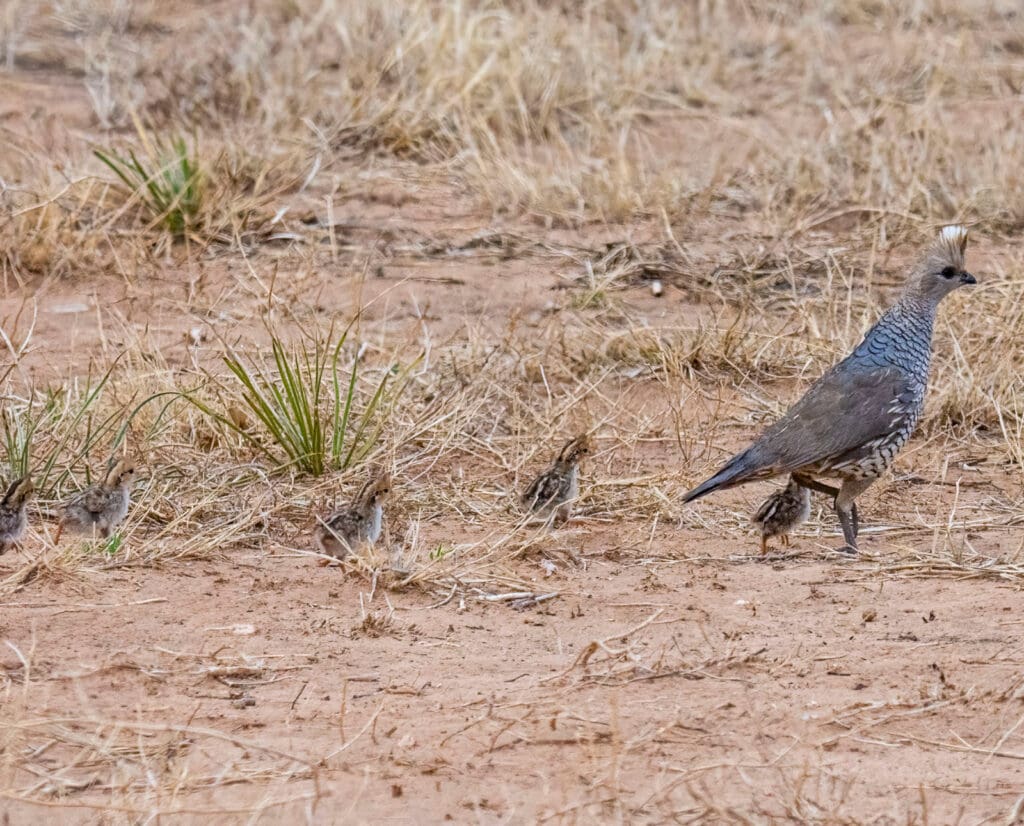Home » Quail Species » How Rainfall Influences Quail Populations
How Rainfall Influences Quail Populations

Frank Loncarich has been a wildlife biologist for over 20…
Raised in the upland bird mecca of Kansas, the passion…
Explore how rainfall, or lack thereof, influences various quail populations across the United States from Southwest quail to the Northern Bobwhite.
I have a penchant for watching the weather. My childhood home had a large glass sliding door. It looked west across an open prairie for nearly a mile, and I would stare intently out as spring storms rolled in. My parents called for me to hide under the stairs the entire time, but I just couldn’t get enough. I still can’t, and I love to look at extended forecasts and predicted weather patterns. But now, I use my love for the weather to predict my favorite pastime: bird hunting.
Listen to more articles on Apple | Google | Spotify | Audible
While habitat quality is still the main driver in game bird populations across the country, weather plays a close second. Most upland game bird species are short-lived, disturbance-dependent animals that rely on high reproductive output to grow populations. Favorable weather conditions and proper timing of these conditions often make or break a successful hatch. However, it’s not that simple. Certain species need favorable conditions at different times of the year than others, and even factors such as too much or too little rain can impact the same species depending on where it’s found in the country.
Understanding these relationships and watching weather patterns many months in advance can give a hunter a leg up on what to expect for the upcoming season and what species to target from year to year.

The Bobwhite Paradox of Weather Conditions on Populations
The bobwhite quail lives from the east coast of the United States to eastern Colorado and from southern South Dakota to Mexico. They have adapted to a wide range of weather conditions, from extreme hot and cold to rainy and dry climates. Despite these adaptations, how bobwhites react to weather variables, particularly moisture, varies widely.
In general, bobwhite quail habitat must include ample areas of weedy vegetation, about knee high, with scattered brush that offers thermal cover and escape from predators. Also, there must be bare ground between herbaceous plants to allow birds to move from place to place. Thick mats of grass or other vegetation equals poor quail habitat.
In the middle and eastern portion of the bobwhite’s range, think Missouri and east, rainfall averages over 40 inches, and herbaceous vegetation, particularly grasses, can become too thick for quail chicks to move around effectively and find food. Additionally, excessive rain during the critical brood-rearing period of June and July can cause chicks to die from hypothermia if they cannot dry off quickly. Dismissing habitat loss for a moment, excessive rains in the eastern United States at the wrong time can cause reproductive failure.
Paradoxically, too little rain in the western part of the bobwhite range can cause a real problem, too. Remember, quail need grass, weeds, and insects in the summer for nest concealment and brood survival. Droughty conditions in Kansas, Oklahoma, and Texas leave large stretches of potential habitat devoid of herbaceous vegetation and the insects that come with it. If these hot, dry conditions stretch over a few years, quail populations will contract back to the densest cover they can find, and birds will just try to survive. That means survival is more important than reproduction; many hens will not even attempt to nest.
But drought is not all bad. Remember that quail need bare ground. There is plenty of that after a drought, and when the rains do fall in February through June, the rangelands in those western states explode with weeds whose seeds were waiting in the ground for a chance to thrive. This results in thousands of square miles of quail nesting and brood habitat, and the birds respond quickly. Nest and brood success skyrockets, and populations rebound seemingly overnight. If rains last a year or two, quail numbers can reach epic proportions like they did in 2015 and 2016. But when the drought returns, it can all come crashing down quickly, and the boom soon becomes a bust.

How Rain Affects Southwest Quail Populations
Gambel’s, scaled, and Mearns’ quail are among the most dynamic, challenging, and personally satisfying quail I’ve ever had the chance to hunt. Putting aside, for a moment, the beautiful landscape in which they live, the reproductive dynamics of each are very different, even though all three species can be harvested on the same hunt. The difference in what makes for great reproductive success is so varied that it is difficult to have stellar hunting for all three species in the same year.
Some years, Gambel’s quail may be knocking it out of the park while scaled quail and Mearns’ struggle. In other years, Mearns’ provide great sport, while Gambel’s and scalies are just average. These frustrating results are driven by rainfall more than any other single factor. Lack of usable space in the Southwest does not play as big a role in reproductive success as it does for bobwhites, so quail usually respond when it rains at the right time of the year.
But what is the right time of year? Let’s first look at Gambel’s quail. This species is the earliest of the three to nest, and they require abundant early spring rains that turn the desert into a landscape of green, providing an abundance of highly nutritious forage full of the right vitamins needed to spur vigorous nesting effort among hens. These conditions also result in excellent nest and chick survival. Rains from February through May spur Gambel’s reproduction, and a lack of rain during these months leads to poor nesting effort among hens and usually a season bust.
Scaled quail also benefit from the conditions created by the early rains Gambel’s love, but they are later nesters than Gambel’s, and they rely more on summer rains to spur reproduction. Like most quail species, scaled quail are capable of nearly explosive reproduction when the rains arrive. The 2015 and 2016 seasons are good examples. During those years, the scaled quail range of Texas and eastern New Mexico received good moisture during May and June, spurring a modern “boom” in scaled quail reproduction, the likes of which had not been seen in years. The dry grasslands, laid bare by years of drought, exploded in weeds, and scaled quail reproduction was off the charts. But the good times didn’t last, and by 2017, numbers were much lower as the rains failed.
Mearns’ quail are an entirely different ball game. These birds of Arizona’s and New Mexico’s high oak and juniper savannas thrive when the seasonal summer monsoon rains fall in abundance. These monsoons kick in during July and August and spur herbaceous vegetative growth and subsequent conditions for Mearns’ to breed successfully. When the monsoon rains are common and widespread, as in 2022, Mearns’ quail numbers and hunting can be fantastic. It can change quickly, however, as it did in 2023 when the monsoon failed, and Mearns’ reproduction largely did, too.
With a species like Mearns’, which is relatively long-lived and not as capable of explosive reproductive potential as other quail species, it is important to practice a very conservative harvest program or lay off entirely during years of poor production.

Research Weather History for Quail Population Ideas
How does one go about trying to plan a hunt for species that are so dependent on rainfall, especially when rain can have different impacts on the same species, as is the case with the bobwhite? My advice is to do your homework well ahead of the season, be flexible, and have multiple places to hunt.
The first thing to understand is how weather impacts the species you are most interested in hunting and where you plan to go. Articles like this one will help you make those connections, and there is lots more information on weather impacts on quail on the internet.
Next is to have multiple places to hunt in mind and monitor the weather conditions a year in advance. The folks at the National Weather Service, agriculture institutions, and others have established a network of weather stations around the country that track rainfall, temperature, and other weather variables, so find the closest one near your potential hunting places and monitor those sites. If you’re planning a bobwhite hunt from Missouri east, watch those rainfall amounts in May and June. What may seem to be a drought in those places typically means that bobwhite numbers might be good the following fall. This exact scenario played out in Missouri during the last two years.
Third, be flexible. Try not to put all your quail eggs in one basket, as it were, in case the weather where you planned to hunt doesn’t work out. Also, remember rain in the West can be very spotty, so monitor rainfall at multiple locations. I failed to follow my own advice in 2023, resulting in a subpar Gamble’s quail hunt in Arizona. Most of the reports from Arizona that year showed good Gambel’s reproduction and a promise of good hunting due to good spring rains. However, the location where Kyle Hedges and I have traditionally hunted has no local weather station. We didn’t realize that location missed out on those rains, and we harvested an adult-to-juvenile age ratio of 5.5:1. That indicates abysmal reproduction. However, we’re relatively new to hunting in Arizona and have not scouted multiple locations within the state. You can bet we will try to explore more of the state going forward, and I will send our landowner friends a rain gauge!
Lastly, call the biologist stationed where you plan to hunt. As a biologist, I am eager to give hunters factual and timely reports on rainfall and predicted reproduction. Yet I am always amazed at how few calls my colleagues and I get. We are not in a destination bobwhite hunting landscape, but I’m surprised every season by how few hunters call us in advance of their trip.
The crazy and different ways weather variables, especially rainfall, affect quail can be frustrating and hard to keep up with. However, use these tactics as a starting point, do your homework (which you will have a lot of fun doing), and keep up with those weather events well in advance. Your future quail hunts will be more productive, with fewer busts along the way.
Frank Loncarich has been a wildlife biologist for over 20 years, specializing in bobwhite and grassland management. He is also a Habitat Consultant for Land and Legacy.
Raised in the upland bird mecca of Kansas, the passion for upland birds was born at a young age for Kyle Hedges. He has now spent over 25 years managing upland game habitat on public lands in Kansas and Missouri for State Conservation Agencies. He also works as a Habitat Consultant for Land and Legacy, assisting landowners across the country with improving their properties.



